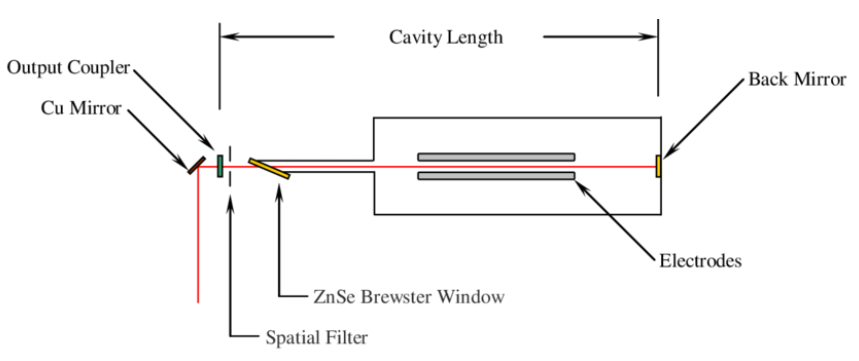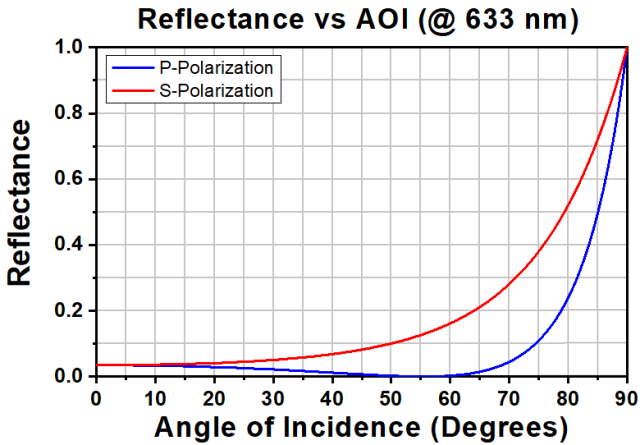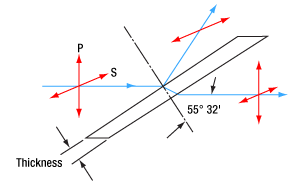Brewster windows are primarily used in laser cavities to generate beams with high polarization purity. When unpolarized light is incident on an uncoated substrate at the Brewster angle, the reflected part is completely S - polarized, while the transmitted part is partially P - polarized. Multiple passes through the substrate can significantly reduce the S - component in the transmitted beam, thereby producing a high - P - polarization output. Multilayer dielectric polarizer coatings can be applied to these substrates to greatly enhance the efficiency and extinction ratio of a single pass through the substrate.
The degree of polarization of the transmitted light can also be improved by increasing the number of substrates. For example, in the infrared band, using just three stacks of germanium can make the transmitted light fully polarized.


The Brewster angle can be calculated using the following formula:


The figure above shows the calculated reflectance values of uncoated ultraviolet - fused silica for polarized light at different incident angles. The reflectance of P - polarized light at the Brewster angle is zero.

The figure above illustrates that the Brewster window reflects S - polarized light and transmits P - polarized light. However, the window pane will also transmit a certain amount of S - polarized light. θB represents the Brewster angle. ni is the refractive index of the incident medium, which is 1.0003 for air. nt is the refractive index of the transmitted medium.